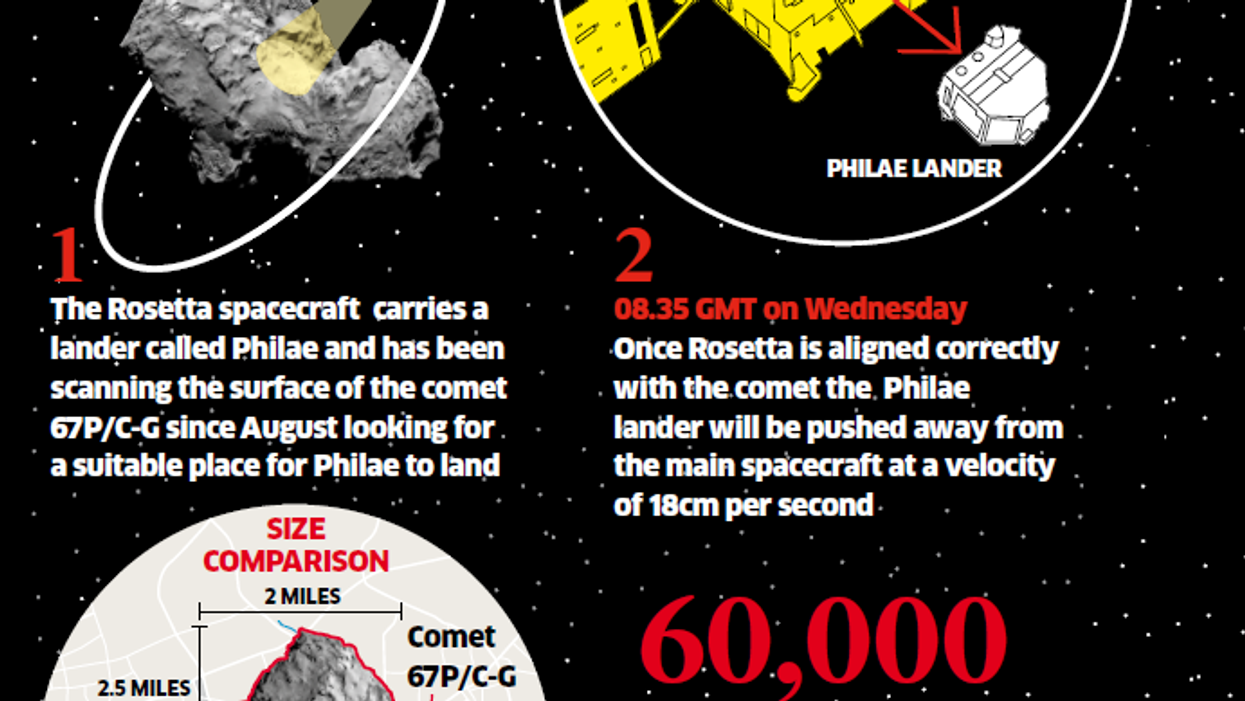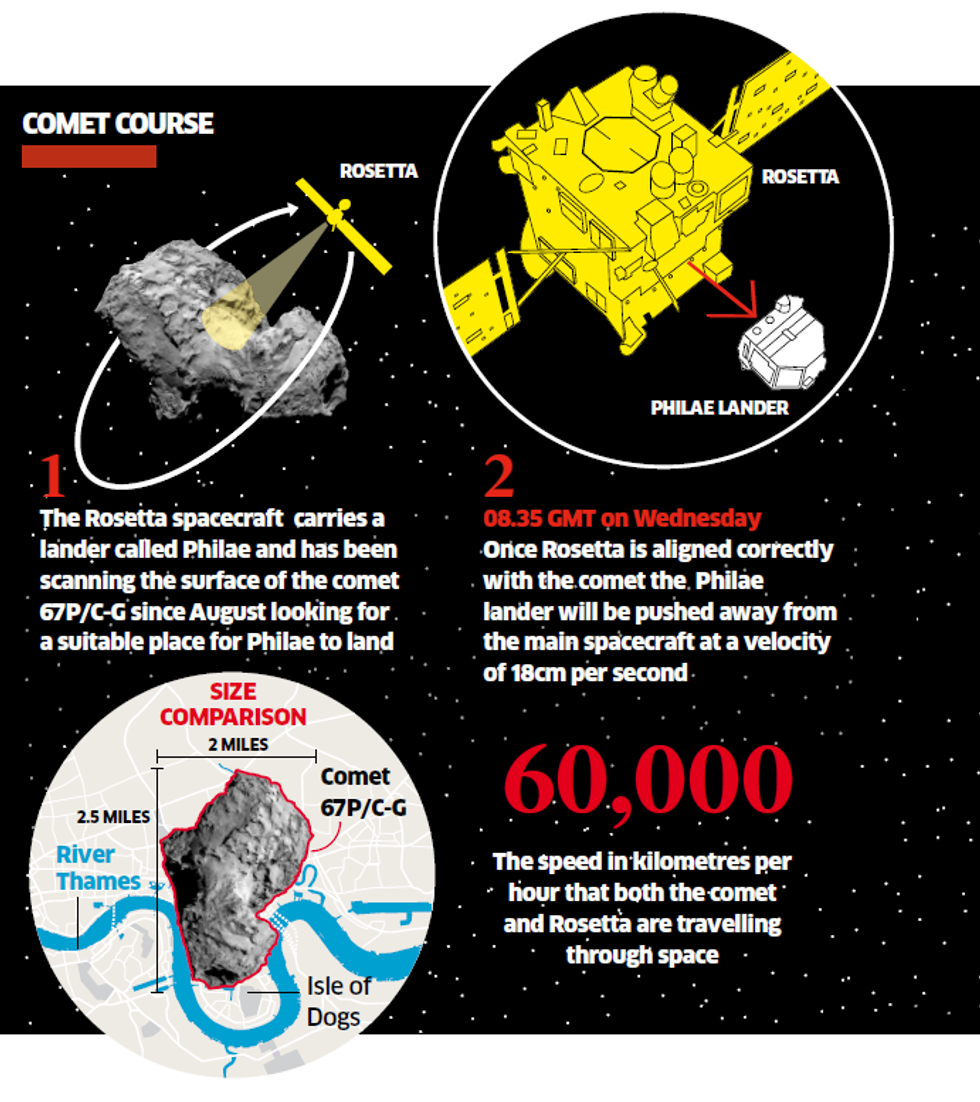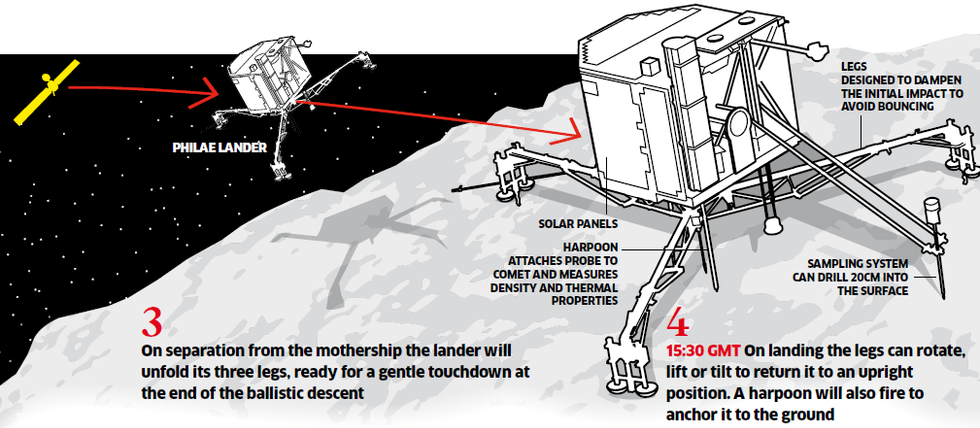Science & Tech
Kitty Knowles (edited
Nov 09, 2014

It's been likened by the European Space Agency to transferring an object from one speeding bullet to another, and this week the Rosetta spacecraft's ten-year mission to put a lander on a comet will come to fruition.
On Wednesday, 500million kilometres from Earth between Jupiter and Mars, the Philae lander, about the size of a washing machine, will be ejected from Rosetta and land on the 67P/Churyumov-Gerasimenko comet in a momentous day for science and space exploration.
That's the idea anyway.
Philae faces many difficulties, principally the fact that it is a passive lander, meaning that once it is released it will drift independently on to a landing ellipse as wide as 500m.
The comet, 2.5km long and 2km wide, is also continuously pushing Rosetta away as it boils off ice as it nears the Sun.
Boulders, cracks, dips and depressions are a significant hazard for Philae, and astrophysicists, led by Dr Fred Jansen, don't know whether the comet - which Rosetta first orbited in August - is made of soft dusty material or is hard and rocky.
Philae has a downward thruster to help it land, legs and a harpoon to act as an anchor, but scientists admit that the terrain of 67P/Churyumov-Gerasimenko could "absolutely kill the lander".
We'll know by Wednesday afternoon whether the ten-year operation was a success.
More: [Meet Rosetta - the comet-chasing satellite on a 4bn mile journey]1
More: [This is the hauntingly beautiful space selfie you were looking for]2
Top 100
The Conversation (0)















